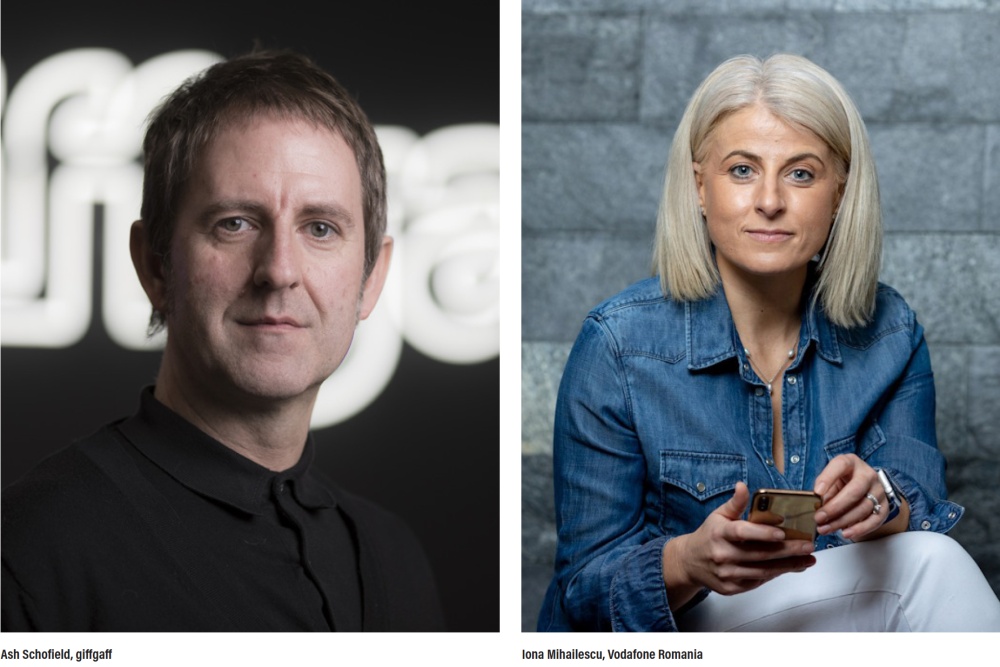
As the pandemic forced so many changes on businesses, some network operators are questioning the value of a call centre, writes Nick Booth.
Could the World Economic Forum’s next list of changes expedited by lockdown include the death of the contact centre? Do we really need expensive humans reading from a script when an intelligent chatbot could do it just as well? And haven’t lockdowns converted almost all of us to doing things digitally?
It is universally accepted that the biggest expense of a call centre is the office space, but that discussion has been complicated by the rise in home-working.
As we went into the first lockdowns, operators around the world scrambled to run their contact centres from their agents’ homes and, done well, a remote workforce could lower the cost base, create a better labour market and give staff more flexibility. Vodafone, Orange and A1 Austria all report positive experiences of this.
Contentious variable
Costs are relatively easy to quantify, but value is a much more contentious variable. Remote monitoring and management is a complex science, according to Orange’s Director of Client Relations, Pierre Grauby.
Though there is no obvious consensus among CSPs on the overall price/performance of human contact, size seems to be linked to digitisation. The smaller the income, be it national GDP or company revenue, the more likely people are to accept self-service.
Swiss operator Sunrise UPC (owned by Liberty Global) runs the swype mobile service without any support via spoken communication and a contact centre. Users connect their phones to the service by downloading their eSIM (subscriber info module) from the web and that gently draws them into the world of self-service.
“Digital natives are on the rise and have clear ideas of what they want their telecom provider to offer,” says Fabienne Rüetschi in swype’s corporate communications department. With swype they get a very simple and unlimited service at cheap rates. swype uses no artificial intelligence (AI) services or chatbots and all questions are answered by a customer agent via chat directly on the app.
Is this just a niche though? In the UK Giff Gaff was founded by O2’s head of innovation Gavin Thompson on the premise that a network could be run without call centres and high street shops. Instead, a community of members would help each other, with rewards for support coming through the payback scheme, which gives credits, charity donations and even cash.
“Our members even helped build parts of the company, crafting Giff Gaff into a company that is truly run by [them],” says CEO Ash Schofield. The business has grown and evolved, but since 2008 it has attracted 3 million members and has given £13 million in payback to them. Though it’s admirable, can the close-knit culture of small, inventive companies be repeated across the multi-national CSPs?
Does cult status ‘scale up’?

Digitialisation
Any aspect of digitalisation can be risky. Transformation costs a fortune and digitisation investment will be heavy, warns Telenet’s CTO Micha Berger (who was our Trailblazer CTO of the Year in 2020). The ‘front-end agility’ that everyone calls for has to be built on very structured foundations, which will not be easy for CSPs based on legacy systems.
Why would you want to be so hasty anyway, asks Alexander Stock, CTO of A1 Austria? The pandemic forced acceptance of certain organisational changes, but being locked down at home made people more reliant on comms technology and this was a crucial change in mindset, he argues, because it made subscribers appreciate the quality of the communications links.
“Our services became essential during Covid and good customer service is vital,” says Stock’s colleague, Florian Kraft, Director of A1’s Digital Customer Management. In three days, Kraft’s team managed to get all the support staff working from home and, he says, “We got amazing customer feedback.”
A1’s life-changing metamorphosis and the restructuring of its call centre workforce has also produced some unexpected benefits. Call centre staff are financially better off, as the time and expense of commuting have been eliminated. As a result, they are more likely to agree to be flexible about shifts, so staff shortages are plugged and subscribers aren’t kept on hold.
The supply of human resources is also improved by the fact that call centre staff can be recruited from further afield. However, since nobody can predict what will happen post-Covid, Kraft is also developing his digital options.
After a long gestation period, another creation has been given a berth at the call centre – Kiara the AI assistant. The brain child of a call centre employee turned lead engineer, Kiara was fed customer service conversations in a back room for three years before being installed as the first line of contact for customers. Already 100,000 requests have been successfully dealt with and Kiara’s target is 500,000.
Meanwhile, Kraft is busy creating a better call centre work environment with a “young, cool spirit” and offering staff the chance to engage in a career and emulate Kraft himself, who worked his way up.
Social science
At Orange, Pierre Grauby treats customer relations as a social science. No encounter between customer and company happens in isolation and every engagement is part of the customer journey. There is a complicated psychology involved and a hierarchy of needs, where people first buy on cost, and then their loyalty is cemented by quality of service and their emotional reactions to their treatment.
There are many ways to resolve a call, but no transaction should be seen in isolation, according to Grauby. “We try to see the conversations as part of a customer journey to problem resolution,” he says, and that involves using all the channels and linking them.
In Spain, 95% of subscribers already use the Facebook-owned WhatsApp for social media and cheap phone calls, so that creates an inexpensive, readymade channel of communication for Orange to make initial contact with customers.
There may come a time when a subscriber needs the broader options offered by a voice conversation and there are so many points of engagement available now, from the high street shop to the chatbot. Micro-segmentation is wonderful, but it all sounds expensive.
“The cost per channel arguments are very interesting. It’s more important to look at the cost per journey and, since no single interaction is an island, providing the best experience is the key to profitability,” says Grauby.
Orange evaluates its customer journeys using variables such as the Net Promoter Score, based on the levels of satisfaction reported by subscribers at each of three critical stages in their customer journey. On their initial engagement customers are quizzed about their immediate satisfaction with the call centre; a more complicated calculation creates the value attached to the customer effort simplicity (CES); and then, finally, there a value attached to ‘the recommendation’, which is whether the customer would promote the CSP to a friend.
Senior demands
However, in some parts of Europe the customer relationship is weighted very differently and quality of service pales in significance against the price. That seems to be the CSP’s paradox.
The people least likely to be profitable customers, the over 40s, are those who need most service. Nevertheless, both A1’s Kraft and Orange’s Grauby say their companies try to match the appropriate level of service to the customer.
Some senior people need to speak in person to similar sounding agents. A lot of work goes into matching up people who are – or appear to be – of the same age and the objective is to get the right personalisation. “We need to speak the right language in the right tone of voice,” says Grauby. Adapting to each customer to create the right mood and recognition of the history between the two parties can create a real boost.
To that end, Orange is developing Affinity, an AI system that is studying thousands of recorded conversations in order to identify moods and tones of conversation and automatically switch each caller to the best agent.
Each agent has a talent to work with a particular type of caller. Some might be great at dealing with more aggressive callers, while others are in their element teasing information out of people who may not be confident, although a cynic might ask: why bother with the old fussPOTS? Older readers will remember that POTS was an acronym for those who wanted a Plain Old Telephone Service.
Indispensable humans
Digital trends change very quickly though, so Deutsche Telekom is covering all bases with 12 channels of communication. A recent PWC study said that 75% of CSP customers now want more human interaction again, so people are in fact indispensable, according to DT’s Head of Communications, Stephan Althoff. “Each trend always creates a counter-trend,” he points out.
The best way to help customers is to keep it simple and remember three rules, says Ioana Mihailescu, Vodafone Romania’s Customer Operations Director: “No transfers, solve it first time and keep your promises. Then follow up with the customer on the progress of the case.”
Human DNA doesn’t prepare us to relate to chatbots, but maybe it would help if they set your expectations from the start, says Mihailescu, who suggests this intro: “I am a bot. I am designed to do this action for you. Although I cannot relate to feelings yet, I have a team of people behind me that is training me.”
A bit clunky perhaps, but it would certainly make a change from, “You are number 96 in the queue. Your call is important to us.”
This article first appeared in the Q1 2021 edition of the Mobile Europe & European Communications magazine, which is available here.


